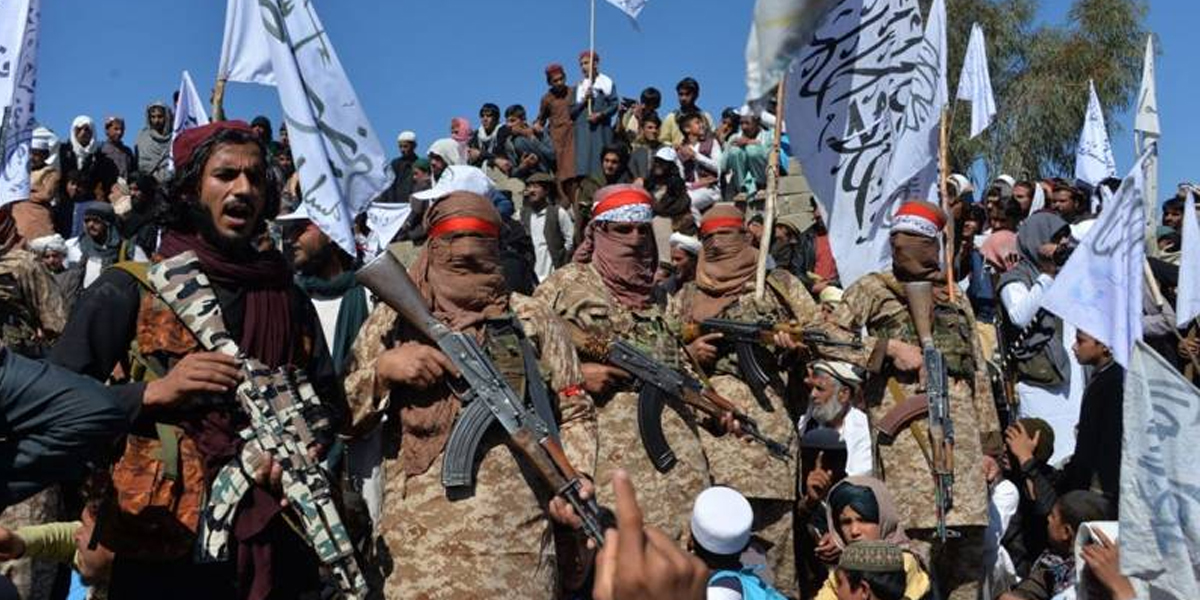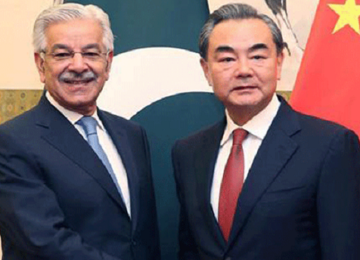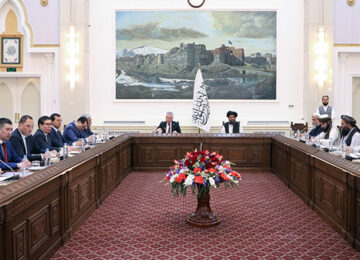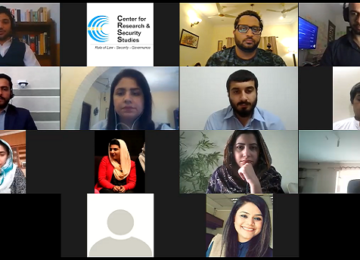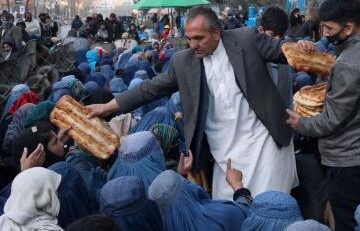The upsurge of violence by Tehrik-e-Taliban Pakistan (TTP) in Pakistan is often attributed to the Taliban’s takeover of Afghanistan in August 2021. However, this oversimplification ignores other significant factors contributing to the TTP’s deadly actions. While Kabul’s events loom large, deeper drivers fuel the TTP’s aggression.
Following the rejection of their demands regarding the restoration of semi-autonomous border regions – formerly known as FATA (Federally Administered Tribal Areas) – and the withdrawal of the Pakistan army, the TTP unilaterally ended the ceasefire agreed upon in June, by late November 2022.
A thorough examination of the events preceding the conflict between Pakistan and the TTP is essential for a comprehensive understanding of the situation’s complexity.
Historical Background
In 2014, the commencement of the Zarb-e-Azb operation led many TTP militants to seek refuge in Afghanistan. The Afghan Taliban, engaged in combat against the US and the Afghan government at the time, offered sanctuary to these militants in exchange for the hospitality they had received in Pakistan since the US invasion of Afghanistan in 2001. There were two significant outcomes of the Zarb-e-Azb operation: a notable decrease in violence in Pakistan and a source of reinforcement for the Afghan Taliban to improve their strategic strength against Afghan forces.
While Pakistan celebrated a decline in violence attributed to its counter-terrorism operations, the TTP continued plotting its resurgence in its former strongholds within the erstwhile FATA. Long before the Taliban’s ascendance to power, the TTP had been diligently pursuing its objectives. Recognizing that reclaiming its past influence solely through its existing presence in Afghanistan was unlikely, the group, with the help of the Taliban, initiated its expansion plans through alliances with its splinter groups and inviting other militant groups hostile to Pakistan to join its cadre.
Pakistan, at that time, was actively engaged in fencing the Pak-Afghan border, driven by multiple objectives. Two prominent aims were to definitively settle the Durand Line dispute and establish a buffer zone along the border to deter cross-border interventions by militants or Afghan forces. However, Pakistan’s policy of securing its borders resulted in a rift not only with the then-Afghan government but also with the Afghan Taliban and its Pakistani allies.
In 2020, a series of cross-border attacks occurred between Afghan and Pakistani forces, resulting in significant casualties. At least 50 Afghan forces lost their lives, while Pakistan suffered 23 fatalities, including 21 civilians and 2 security personnel. According to reports from the media wing of ISPR, the clashes erupted when Afghan forces initiated fire while Pakistani troops were conducting routine surveillance along the Pak-Afghan border and preparing for the commencement of fencing in the area.[1] These clashes occurred before the Taliban’s takeover of Kabul and were largely attributed to the historical animosity that the Afghan government harboured towards Pakistan.
The border conflict extended beyond Afghan forces. According to the 27th UN Analytical and Monitoring Team’s (UNATM) report of February 3, 2021, the TTP was responsible for over 100 “cross-border” attacks in Pakistan within three months in the previous year (2020). Pakistan acknowledged this report and emphasized the need for dedicated efforts by the ANDSF[2] and RSM[3] to neutralize this threat emanating from Afghanistan.
These developments laid the foundation for suspicions and mistrust between Pakistan and the Afghan Taliban, as well as with the TTP militants. The TTP viewed the border fencing efforts as a deliberate strategy designed to impede their cross-border movement and prevent them from reclaiming authority in the region. Despite concerted efforts to materialize the “strategic depth” policy, the renewed unity of the TTP with support from the Afghan Taliban has alerted Pakistan to the possibility of facing repercussions should a friendly Afghan state emerge.
Although Pakistan’s approach was initially proactive, the adverse effects of the border fencing policy quickly became apparent once peace negotiations between the USA and the Afghan Taliban commenced. Nevertheless, Pakistan persisted in its efforts to facilitate peace talks between the USA and the Afghan Taliban, hoping for positive outcomes once the Taliban assumed power. Regrettably, these hopes were shattered as the unfolding reality took a different course.
Factors Behind the Rise of TTP Since Aug 2021
The significant decline in violence observed in Pakistan after 2015 was initially perceived by some security strategists as evidence of the effectiveness of Pakistan’s anti-terror efforts. However, a dramatic shift in the security situation occurred in 2021 when US forces departed from Afghanistan, creating an opportunity for local factions to compete for control of Kabul. The Taliban emerged as the ultimate victor, supported by TTP militants who had allied with them following the Zarb-e-Azb operation. As a gesture of goodwill, the Taliban released 2,300 TTP prisoners from Afghan jails shortly after regaining control of Afghanistan.[4]
Top of Form
The resurgence of the Taliban in Afghanistan marked the end of a two-decade-long conflict aimed at reclaiming the country from foreign influence and reinstating Sharia law. In contrast, the TTP, while sharing some goals with the Taliban, remained distant from achieving similar objectives.
To assist the TTP, the Taliban announced on August 22, 2021, that the TTP should resolve its issues with Pakistan and return, along with their families, in exchange for potential amnesty[5]. However, the TTP rejected this offer, instead demanding the imposition of Sharia law in Pakistan[6]. This disagreement hindered efforts to reach a settlement between Pakistan and the TTP, leading to a stalemate and prompting the TTP to initiate conflict within Pakistan.
By 2022, reports indicated that the TTP had significantly expanded its influence by assimilating 22 militant groups. The reconciliation process initiated by the Afghan Taliban in 2020 aimed to unite all militant groups under the TTP’s umbrella[7], including notable groups like the Shahryar Mehsud group, Jamaat-ul-Ahrar, Hizb-ul-Ahrar, Amjad Farooqi group, and the Usman Saifullah group (formerly known as Lashkar-e-Jhangvi).
In a revealing interview with BBC Urdu on January 19, 2023, the former Prime Minister of Pakistan, Imran Khan, addressed the contentious issue of the TTP’s presence in Afghanistan. Discussing the potential rehabilitation of TTP fighters and their families in Pakistan, he presented a stark choice: “We could either line up those 40,000 people, including fighters and their families, and shoot them, or we could rehabilitate them[8].” Khan emphasized the need for addressing a dilemma that, in his view, contradicted certain commitments made by the previous government. The specifics of these pledges and the circumstances under which they were made remain undisclosed.
One potential inference that can be drawn from this statement is that TTP fighters were dispatched to assist the Afghan Taliban in combatting foreign forces, with assurances of eventual repatriation once the conflict ended. However, regardless of the validity of this claim, such a commitment seems implausible given the circumstances under which they were compelled to flee the country, notably due to the heinous act of violence they perpetrated against the innocent students of the Army Public School. Nonetheless, it is conceivable that the TTP had its motives for seeking repatriation, capitalizing on Pakistan’s “strategic depth” policy, initially devised to counter Soviet and Indian influence in Afghanistan. Under the newly developed circumstances, this policy inadvertently provided tactical advantages to both the Taliban and TTP.
For Pakistan, this policy stemmed from its longstanding aspiration to establish a friendly government in Afghanistan capable of resolving the enduring dispute over the British-drawn Durand Line. With TTP militants residing in Afghanistan, the Afghan Taliban saw them as valuable assets in leveraging Pakistan’s “strategic depth” policy to their advantage. A proxy war ensued, utilizing the arms and ammunition left behind by USA and NATO forces. Pakistani militants became pawns in this war of attrition.
In 2022, the Combating Terrorism Center of the USA reported that the TTP had succeeded in recruiting four Baloch militant groups, signifying a notable expansion of its operational reach from the Pashtun belt of Balochistan into the Baloch belt—a first for the organization. The leaders of these Baloch militant groups who joined the TTP were identified as Aslam Baloch, Mazar Baloch, Akram Baloch, and Asim Baloch. While the report did not specify the names of the groups they led, the surge in attacks by Baloch separatist groups following the Taliban’s triumph in Afghanistan lends credence to the report’s assertions.
Moreover, there has been a noticeable evolution in the tactics of Baloch separatist groups over the past three years. Departing from their previous methods, they resorted to executing suicide attacks, such as the one at Karachi University in 2022 and another in 2023. Unlike the TTP, the Baloch separatists employed female suicide bombers, indicating a shift in their modus operandi.
However, the TTP persisted in its tactic of assimilating additional militant factions under its alliance, and by January 2024, it had managed to enlist 50 affiliated groups. The 33rd report from the UN Analytical and Monitoring Team (UNATM), submitted to the UN Security Council Committee, pointed out that not just the Afghan Taliban but also Al-Qaeda are backing the TTP. Both groups were accused of supplying weapons, gear, and direct operational support for TTP’s activities against Pakistan.[9]
On January 5, 2023, in the Khanewal district of Punjab, an Al-Qaeda-linked group, Laskhar-i-Khorasani, and TTP jointly claimed responsibility for the murder of two ISI officials, validating the findings of the UNATM report.
In addition to consolidating various militant groups under its umbrella, the TTP devised several new strategic initiatives, including:
- Enhancing strength by forging alliances with other militant groups and establishing new factions.
- Formation of entirely new groups within its structure.
- Focusing attacks primarily on security personnel rather than civilians.
- Conducting surprise assaults employing large groups of armed militants.
With a vast network of affiliates and splinter factions gathered under its banner, bolstered by the release of its hardcore militants from Afghan prisons, the TTP emerged as a formidable threat poised to reignite operations in its former stronghold within Pakistan. Between 2021 and 2023, the TTP orchestrated 94 lethal attacks, primarily targeting security personnel in KP and Balochistan. Simultaneously, militants based in Afghanistan, presumed to be affiliates of the TTP, also carried out eighteen assaults. Additionally, five newly formed militant entities—Tehreek-e-Jihad Pakistan (TJP), Ansar-ul-Jihad (AaJ), The Islamic State Pakistan (ISP), Ittehad-ul-Mujahideen group, and Majlish-e-Askari—claimed responsibility for fourteen additional attacks, with TJP alone accounting for ten of them.
The TJP emerged as the most lethal among the newly formed groups, expanding its activities beyond Balochistan and KP by launching an assault on a PAF Training Campus in Mianwali, Punjab. Meanwhile, The Islamic State Pakistan (ISP) targeted a JUI-F convoy in the Mastung district of Balochistan, while Majlis-e-Askari took responsibility for the decapitation of an individual in Lakki Marwat, accusing him of espionage for Pakistan[10]. In another incident, a group of 20 militants affiliated with Ittehad-ul-Mujahideen stormed the house of a Frontier Constabulary policeman in Janikhel, Bannu,[11] beheading both him and his son. Ansar-ul-Islam (AaJ) also attacked police forces in the Tank and Khyber districts of KP.
In 2023, at least two more militant organizations, Lashkar-e-Islami and Lashkar-e-Jhangvi, recently aligned with the TTP, became active and carried out a couple of attacks. Among the TTP’s splinter groups, three remained operational in both 2022 and 2023: The Hafiz Gul Bahadur group, the Tipu group, and the Zarrar group. Meanwhile, Baloch and Sindhi separatist groups—SRA, BLA, BLF, BRA, and BRG—also escalated their operations across the country, setting new records by executing 61 attacks within the last three years.
In addition to these manoeuvres, the TTP has adopted a fresh militant approach by persuading other extremist factions to conduct coordinated operations. Evidence indicates that at least four attacks last year resulted from joint efforts by various militant and insurgent groups. Specifically, two assaults were carried out through collaboration between the TTP and Lashkar-e-Islami, while another involved the al-Qaeda-linked group Lashkar-i-Khorasani operating alongside the TTP in Khanewal. Additionally, a joint operation by TJP and BLA targeted a Frontier Corps camp in Muslim Bagh.
Another operational strategy adopted by militant groups involved deploying groups of 10 to 12 or more militants to execute attacks from multiple sides, utilizing various weapons ranging from hurling hand grenades to firing and ramming vehicles driven by suicide bombers. In one case, 150 militants associated with the TTP carried out the cross-border attack in Chitral on Defence Day and claimed to have taken two security checkposts under their control[12]. On 30 October 2023, nearly 20 militants of BLA attacked the Naseerabad Police Station and killed a policeman and four labourers[13].
The surge in suicide attacks highlighted a concerning trend of escalating militancy in the country, a trend that began to take shape in 2021. Throughout 2021 to 2023, a total of 47 suicide attacks were documented, with the TTP claiming responsibility for 12 of them. Additionally, TJP, a militant faction emerging in 2023 believed to be an offshoot of the TTP, claimed three attacks. Baloch separatist groups carried out two suicide attacks by females.
Notably, on February 18, 2023, an alleged female suicide bomber, Mahal Baloch, with ties to BLF, was arrested in Quetta as well[14]. These incidents collectively indicate a shared pattern of violent methodology pursued by both Jihadi militants and separatists.
Conclusion
The TTP, previously seen as a group representing disgruntled elements within the country, has been approached by Pakistan multiple times in the past three years to engage in peace negotiations. Pakistan sought assistance from the Afghan Taliban to dissuade the TTP from conducting cross-border attacks and to discourage their sleeper cells and associates from instigating violence within Pakistan. However, these efforts have been unsuccessful, as the Afghan Taliban firmly regard the issue as Pakistan’s internal problem and deny any involvement in facilitating attacks in neighbouring countries. Amid this backdrop, the TTP continues to strengthen and broaden its operational capabilities, primarily targeting Pakistani security forces.
The ongoing territorial dispute over the Durand Line, a legacy of British colonial rule, is once again being used as a pretext for employing proxies driven by religious sentiments to resolve the issue. The toll inflicted upon both Afghanistan and Pakistan in this dispute is steadily escalating, with no resolution in sight.
Amid a highly polarized political landscape and a severe economic crisis gripping the nation, militants and insurgents are adopting a new strategy: setting aside their differences and forming a united front to pursue shared goals. This development underscores the urgent need for concerted efforts from all stakeholders and the country’s leadership to devise a comprehensive strategy to counter the growing threat of lawlessness, which continues to disrupt peace and exact a heavy toll on the country’s stability and development.

By Mohammad Nafees
The author is a freelance journalist and Senior Research Fellow at the Center for Research & Security Studies
[1] https://nation.com.pk/16-Apr-2018/two-pak-soldiers-martyred-in-afghan-border-clash
[2] Afghanistan National Defense and Security Forces
[3] Resolute Support Mission (RSM), a NATO-led mission in Afghanistan to train ANDSF
[4] https://nayadaur.tv/2021/08/afghan-taliban-release-ttp-prisoners-after-taking-over-bagram-airbase/
[5] https://tribune.com.pk/story/2316713/taliban-commission-to-investigate-pakistans-ttp-concerns
[6] https://www.arabnews.pk/node/1931331/world
[7] https://tribune.com.pk/story/2392466/new-militant-group-joins-ttp
[8] https://www.dawn.com/news/1732432/broken-pledges-behind-fresh-wave-of-terror-says-imran
[9] https://www.dawn.com/news/1810228/ttp-backed-by-al-qaeda-afghan-taliban-un
[10] https://thebalochistanpost.net/2023/09/jui-leader-hafiz-hamdullah-among-11-injured-in-mastung-blast/
[11] https://www.dawn.com/news/1725083/fc-soldier-martyred-beheaded-in-bannu
[12] https://tribune.com.pk/story/2435136/fm-eats-own-words-on-ttps-chitral-incursion
[13] https://www.dawn.com/news/1785229/policeman-among-5-killed-in-turbat-attack
[14] https://tribune.com.pk/story/2402066/female-suicide-bomber-arrested-in-quetta-supported-blf



